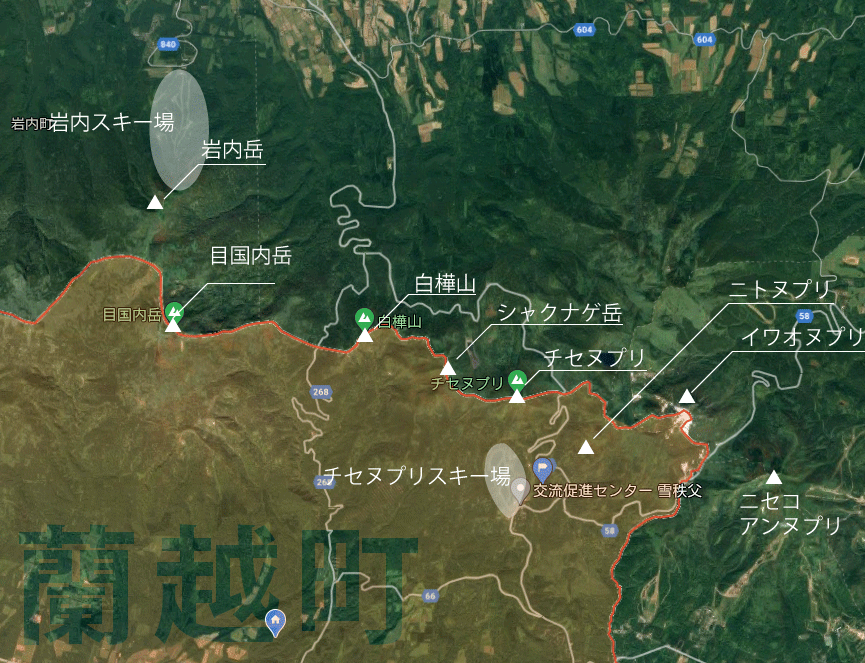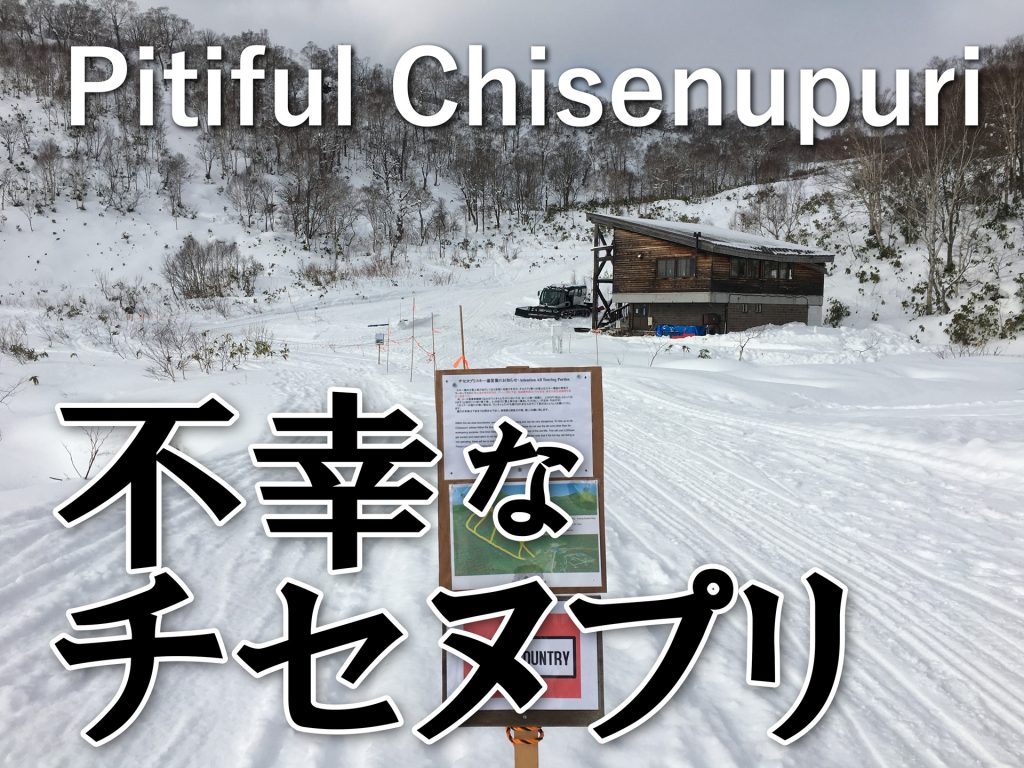
Pityful Chisenupuri Ski Slopes
The Chisenupuri Ski Slopes have stopped operating the aging lifts at the end of the 2012-13 season.
Rankoshi-cho, which owns the facility, decided to sell them to a company, JRT Trading, tour guiding and lodging company (HBC “Hokkaido Backcountry Club” / BDL “Black diamond lodge”) after a public offering.
At the same time, Rankoshi-cho made adjustments to take over the lease right with Hokkaido, which owns the land of ski slopes.
And after the contract (facility transfer/succession of rent) is concluded
HBC has started a private mountain CAT ski tour, which is not included in the business plan presented to Rankoshi-cho. At same time, HBC has prohibit non-costmers of CAT ski tours to enter the slopes.
What makes everyone angry is that the proposed business plan differs from what HBC is actually doing.
Why did Rankoshi-cho choose a contract type whose operation could not be controlled?
Why did Rankoshi-cho contract without requiring a resumption of the lift.
Why does Rankoshi-cho allow JRT the operation of a ski slopes different from the proposal?
This website is a case study that considers a proper disposal process and a proper use of public assets that acts of disonesty are often occuer on it.
HBC/JRT
JRT proposed to Rankoshi-cho a plan to invest 300 million yen in lifts 2020-21 season, with a focus on ski schools. However, in reality, they have been operationg for the exclusive whole mountain CAT ski tour.
Rankoshi-cho
Rankoshi-cho, while knowing the boom in the Niseko area, made a public offer for the sale of ski resort facilities with poor information. And sold the ski resort facility for incredibly cheap price.
Hokkaido
The land of the ski resort is under the jurisdiction of the Hokkaido Forest Office. Rankoshi-cho has been puting the responsibility on Forest Office. HBC is also insisting that there is no problem because it pays rent to Hokkaido Forest Office.
Features of Chisenupuri Ski Slops
After the burst of the bubble, the ski population continued to decline. On the other hand, in the Niseko area, the quality of snow was highly evaluated, and the number of guests from overseas increased. At the same time, Niseko was evaluated for its potential as a resort, and active investment was made.
The Chisenupuri ski area was a bit far from Niseko United, and because of its small size, it was never visited by many people. However, because of its good quality powder snow, it was popular. Also, because it is the entrance to the Niseko Mountains, it was a point for many backcountry skiers to enter.
Lift operation has stoped
Rankoshi-cho, which runs Chisenupuri ski lift, decided to sell the lift and facilities because of the deterioration of the lift.
Enthusiasts who it demanded retaining of the ski slopes, and more than 7,000 signatures were gathered from inside and outside Hokkaido.
However, after the 2013-14 season, the lift operation has stopped.
Advertising for transferring the ownership of the ski facilities
From December 2014 to April 2015, Rankoshi-cho made a public offering for a sale the ski facilities for 50 million yen.
Rankoshi-cho once agreed with a staffing agency in Tokyo, but did not reach a contract.
Rankoshi-cho lowered the price to one-fifth, 10 million yen, and made a public offering again from March to April 2016.
Has Rankoshi-cho made a proper public offering?
Although it did’t reach a deal, Rankoshi-cho made a large price cut (One-fifth!) despite knowing that the buyer would get it for 50 million yen.
In addition, the last public offering lasted 5 months, while the public offering after the price cut was shortened to 2 months.
JRT proposed investing 300 million yen in resumption the lift
The JRT’s proposal indicated that they would proceed with the creation of a ski resort based on the concept of an eco-ski resort that considers the natural environment. And the balance sheet stated that 300 million yen will be invested in the lift during the 2020-2021 season. It was indicated that the CAT ski school would be the mainstay of the balance until the lifts were maintained. In addition, powder skiing by CAT is limited to early morning, and it was treated very small in the balance sheet.
Evaluating items determined by Rankoshi-cho in response to the proposals of the four companies
Re-offering was done in a short term, but still six companies applied.
When Rankoshi-cho asked six companies to interview at their office. Then two companies abstained so there were four companies.
Rankoshi-cho set up evaluating items to evaluate the proposals of each company.
The following evaluating items were included in it.
- Whether to use the existing lift?
- Whether each proposal contributes to regional promotion?
- What about future plans for the lift?
- Is each proposal feasible?
- Whether each proposal can be used by the townspeople?
Rankoshi-cho sold the ski facilities to JRT
Rankoshi-cho has decided to sell the facilities to JRT, and has signed a business transfer agreement on 30 November 2016 and a contract to take over land lease rights on 28 October 2016.
HBC started snow cat shattle service allow small groups up to 13 skiers and boarders for ski slopes 1st Jan 2017.
HBC started snow cat shuttle service allow small groups up to 13 skiers and boarders for all the ski slopes 1st Jan 2017.
At the same time, HBC banned non-CAT ski guests from entering the ski slopes.
The ski school proposed as a pillar of profit has never been held.




